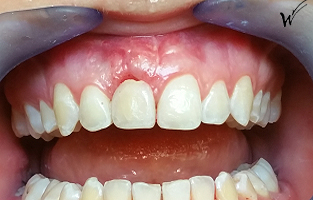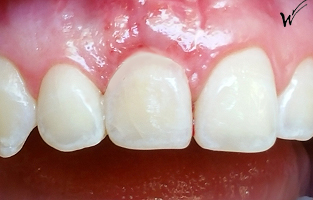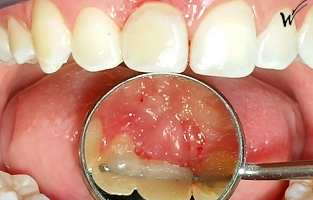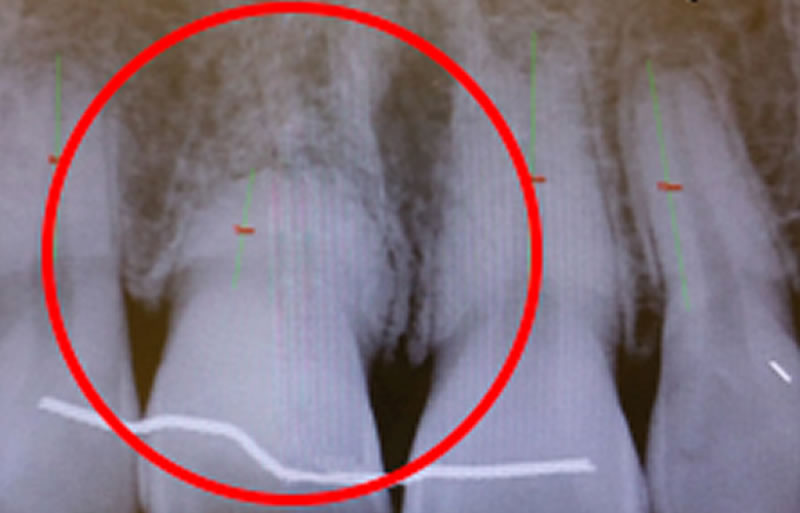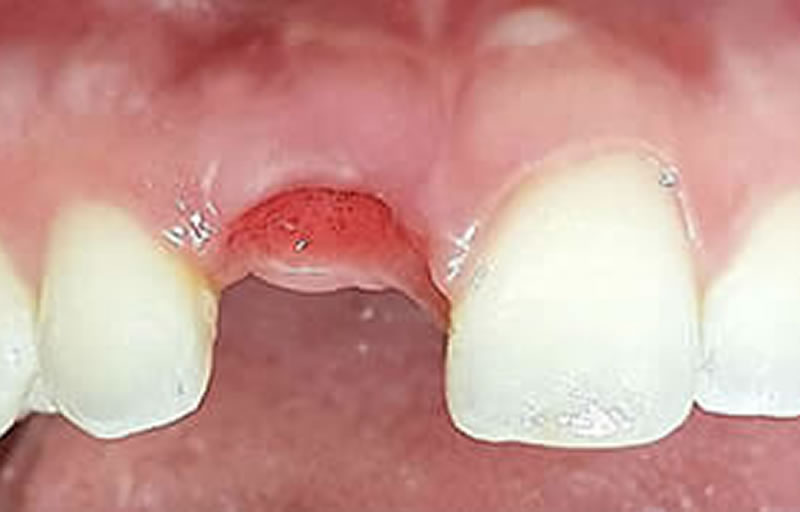initial
treatment
Our COMPLEX CASE EXAMPLE
AESTHETIC RECONSTRUCTION
HERE'S AN example of a complex case of aesthetic reconstruction of the crown of a central incisor and its periodontium, after extraction of the tooth.
The extraction of a central incisor, followed by the placement of an esthetic ceramic crown on an implant to replace the extracted tooth root, is a complex dental procedure.
To restore the tooth socket depopulated after root extraction, as well as the external (vestibular) bone wall of this socket, and finally to sculpt the gingiva around the dental crown, a bone and gingival reconstruction procedure of the socket is necessary. The procedure involves biosynthetic bone grafting techniques, the use of PRF (Plasma Riche en Fibrine) membranes containing platelet growth factors to promote healing, and PRP (Plasma Riche en Plaquettes) injections to stimulate regeneration of the aforementioned tissues.
The dental implant can be placed before or during bone and gingival grafting, with the addition of PRP and PRF. One option is to use digital guidance during implant placement. Once the dental implant has been osseointegrated and the grafts have matured, a fixed cosmetic ceramic crown is fabricated to reconstitute the natural dental crown.

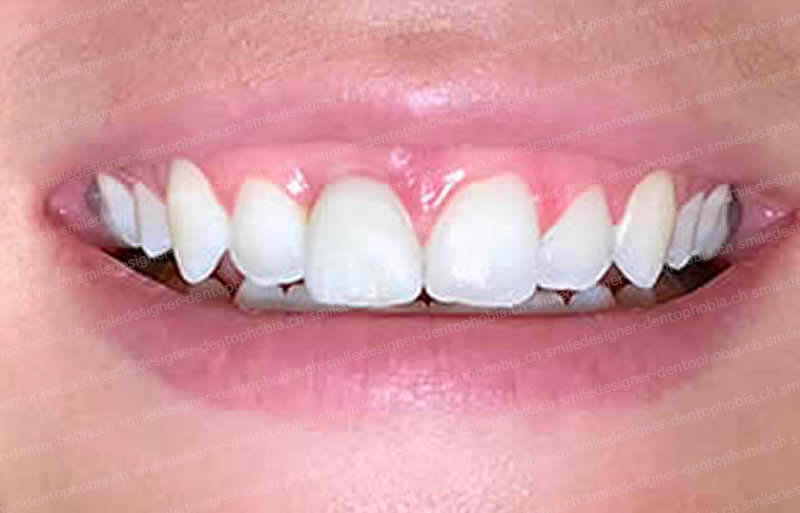
Initial clinical situation before treatment
extraction of this tooth
Due to rhizalysis problems, pathological root resorption and infection, the patient’s central incisor was extracted.
During this extraction, biomaterials (bone substitutes) were used to fill the emptied socket. It was also essential to repair or reinforce the outer wall of this alveolus to prevent resorption. The thinness of this wall around the natural root of the incisor (a few tenths of a millimetre) made it impossible to place an implant alone, given the ageing of the surrounding tissues and the importance of aesthetics at this level.
At the time of extraction, an epithelial-conjunctive graft was required to restore both the height of the gingival scalloping and, of course, the gingival papillae that disappear with the extracted tooth. I opted for a pedicle graft with a retro-incisal palate harvest.
The use of PRF (Plasma Riche en Fibrine) membranes containing scar-forming platelet growth factors, together with PRP (Plasma Riche en Plaquettes) injections, during the operation, enhances the reconstruction capacity of the aforementioned tissues. These modern protocols, constantly perfected by clinicians, offer major advantages for the immediate restoration of microvascularization, a decisive factor for optimal long-term healing of soft and hard tissue.
The implant was positioned in the alveolus, aligned with the root. At this stage, a surgical guide can be extremely useful, in particular to avoid possible anatomical obstacles, such as vascular-nervous bundles located in the retro-incisal foramen.
Once the soft tissue (gingiva) and hard tissue (alveolar bone) had healed, the esthetic ceramic crown was placed on the implant.
Maintaining smile esthetics depends largely on the reconstruction of the gingival tissue surrounding the esthetic ceramic crown and the bone around the implant.
tissue healing and clinical outcome placing the ceramic crown
